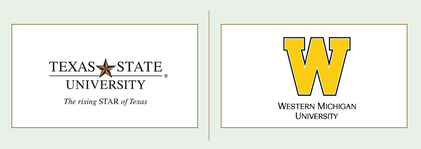Findings
Instructional Change Teams
We define instructional change teams as three or more individuals (e.g., faculty, staff, students) that meet regularly together to work on instructional change by either revising existing courses or creating new courses within a department or an institution.
Background
Team-based efforts for improving undergraduate STEM education are becoming increasingly prevalent at higher education institutions across the US. Such efforts have higher chances of achieving high quality and long-lasting outcomes, but they also bring challenges that might hinder team success. Currently, there is limited literature on team-based collaboration in higher education. Our research aims to fill in this gap by exploring how these teams are set up and what aspects of their collaboration can contribute to higher chances of success.
STUDY 1
Through our work, we explored how instructional change teams are currently used and structured at different institutions. We interviewed 28 project leaders at different institutions across the U.S. to identify key team setup characteristics and the outcomes. By using the literature in addition to our data, we suggested a preliminary model of instructional change teams. We identified five key team inputs through our interviews: the nature of task, who participates, process constraints, external engagement, and access to resources. We also posited that there are four outcomes that are important for those teams based on the literature and our interviews: the quality of instructional changes, the sustainability of instructional changes, individual changes, and collaboration changes. We also proposed that team processes and emergent states, as defined by Marks et al. (2001), mediate the relationship between team inputs and outcomes. You can read more here.
We define instructional change teams as three or more individuals (e.g., faculty, staff, students) that meet regularly together to work on instructional change by either revising existing courses or creating new courses within a department or an institution.
Background
Team-based efforts for improving undergraduate STEM education are becoming increasingly prevalent at higher education institutions across the US. Such efforts have higher chances of achieving high quality and long-lasting outcomes, but they also bring challenges that might hinder team success. Currently, there is limited literature on team-based collaboration in higher education. Our research aims to fill in this gap by exploring how these teams are set up and what aspects of their collaboration can contribute to higher chances of success.
STUDY 1
Through our work, we explored how instructional change teams are currently used and structured at different institutions. We interviewed 28 project leaders at different institutions across the U.S. to identify key team setup characteristics and the outcomes. By using the literature in addition to our data, we suggested a preliminary model of instructional change teams. We identified five key team inputs through our interviews: the nature of task, who participates, process constraints, external engagement, and access to resources. We also posited that there are four outcomes that are important for those teams based on the literature and our interviews: the quality of instructional changes, the sustainability of instructional changes, individual changes, and collaboration changes. We also proposed that team processes and emergent states, as defined by Marks et al. (2001), mediate the relationship between team inputs and outcomes. You can read more here.
STUDY 2
At the next stage of our work, we aimed to unpack the team processes and emergent states to identify specific aspects of how teams can work together to have higher changes of success. We focused on four teams led by the project leaders in Study 1 and elicited information from the team members themselves about their team's collaboration. We conducted individual interviews with 23 team members. From this, we identified three emergent states: shared vision, psychological safety, and team cohesion, that are linked to productive team outcomes, and five team processes: strategic leadership, egalitarian power dynamics, team member commitment, effective communication, and clear decision-making processes, that contributed to the development of these states. More specifically, we find evidence that:
At the next stage of our work, we aimed to unpack the team processes and emergent states to identify specific aspects of how teams can work together to have higher changes of success. We focused on four teams led by the project leaders in Study 1 and elicited information from the team members themselves about their team's collaboration. We conducted individual interviews with 23 team members. From this, we identified three emergent states: shared vision, psychological safety, and team cohesion, that are linked to productive team outcomes, and five team processes: strategic leadership, egalitarian power dynamics, team member commitment, effective communication, and clear decision-making processes, that contributed to the development of these states. More specifically, we find evidence that:
- When teams develop a shared vision it may improve their ability to collaborate, reach their goals, and sustain their collaboration. We also find that effective communication and clear decision-making processes influence the development of shared vision.
- Psychological safety leads to improved ability to collaborate as a team and sustain a team's collaboration. We also find that the egalitarian power dynamics contribute to the development of psychological safety.
- High team cohesion may improve a team's ability to collaborate and their eagerness to continue working together. We also find that team member commitment contributes to the development of team cohesion in instructional change teams.

This work is supported by the National Science Foundation (NSF) awards #1525393, #1914857, and #1914880.

